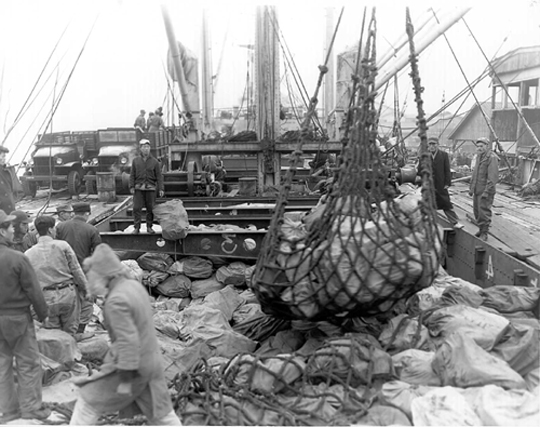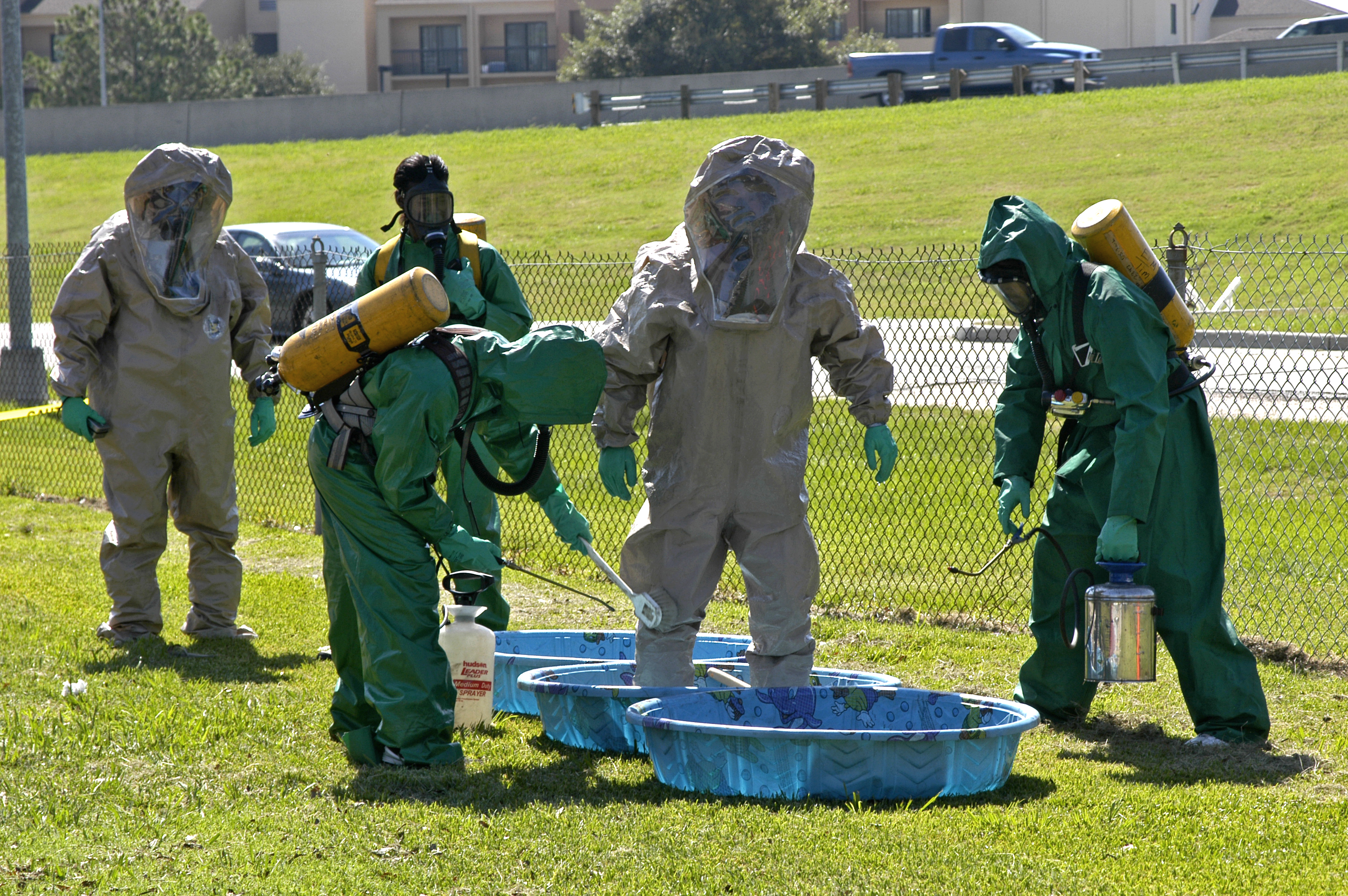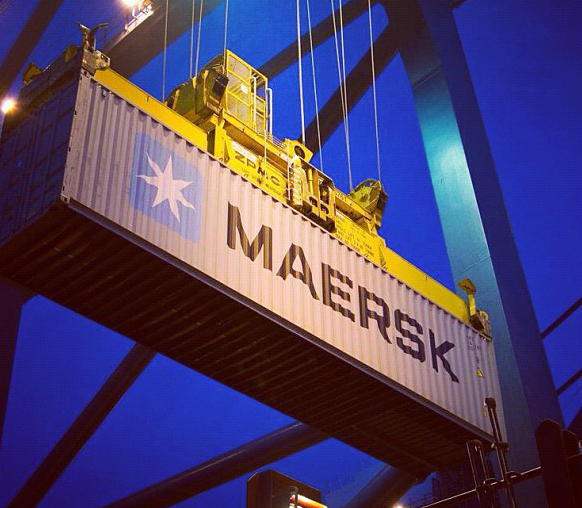|
Stowage
In nautical terminology, stowage is the amount of room available for stowing materials aboard a ship, tank or an airplane. In container shipping, stowage planning refers to the arrangement of containers on board a container vessel. The stowage of a container ship involves different objectives, such as to optimize the available space and prevent damage to the goods, and more importantly, to minimize the time the vessel spends at the port terminal. Containers will be arranged depending on their destinations (those going to the first port calls in the schedule will be placed on top), cargo weight (lighter containers are stored on top of heavier ones), cargo nature (dangerous goods Dangerous goods are substances that are a risk to health, safety, property or the environment during transport. Certain dangerous goods that pose risks even when not being transported are known as hazardous materials ( syllabically abbreviate ... containers normally are placed at the end of ship, and ... [...More Info...] [...Related Items...] OR: [Wikipedia] [Google] [Baidu] |
Stowage Plan For Container Ships
Stowage plan for container ships or bay plan is the plan and method by which different types of container vessels are loaded with containers of specific standard sizes. The plans are used to maximize the economy of shipping and safety on board. Purpose In order to maximize the economy of handling and shipping of containers on a container ship, stowage plans, sometimes known as bay plans, have become essential in the shipping trade. The plans are also vital for safety on board the ship and it is recommended that personnel working on ships are familiar with them. Modern stowage plans are executed by computer programs using mathematical calculations similar to those used for solving complicated ''Tetris'' problems. One such system of programs is the MACS3Cloud CASP Containers and ship sections The most common and noted type of containers ar ...[...More Info...] [...Related Items...] OR: [Wikipedia] [Google] [Baidu] |
Containerization
Containerization is a system of intermodal freight transport using intermodal containers (also called shipping containers, or International Organization for Standardization, ISO containers). Containerization, also referred as container stuffing or container loading, is the process of unitization of cargoes in exports. Containerization is the predominant form of unitization of export cargoes today, as opposed to other systems such as the barge system or palletization. The containers have Standardization, standardized dimensions. They can be loaded and unloaded, stacked, transported efficiently over long distances, and transferred from one mode of transport to another—container ships, rail transport flatcars, and semi-trailer trucks—without being opened. The handling system is mechanized so that all handling is done with cranes and special forklift trucks. All containers are numbered and tracked using computerized systems. Containerization originated several centuries ago ... [...More Info...] [...Related Items...] OR: [Wikipedia] [Google] [Baidu] |
Container Ship
A container ship (also called boxship or spelled containership) is a cargo ship that carries all of its load in truck-size intermodal containers, in a technique called containerization. Container ships are a common means of commercial intermodal freight transport and now carry most seagoing non-bulk cargo. Container ship capacity is measured in twenty-foot equivalent units (TEU). Typical loads are a mix of 20-foot (1-TEU) and 40-foot (2-TEU) ISO-standard containers, with the latter predominant. Today, about 90% of non-bulk cargo worldwide is transported by container ships, the largest of which, from 2023 onward, can carry over 24,000 TEU. History There are two main types of dry cargo: bulk cargo and break bulk cargo. Bulk cargoes, like grain or coal, are transported unpackaged in the hull of the ship, generally in large volume. Break-bulk cargoes, in contrast, are transported in packages, and are generally manufactured goods. Before the advent of containerization in the ... [...More Info...] [...Related Items...] OR: [Wikipedia] [Google] [Baidu] |
Nautical Terminology
Seamanship is the skill, art, competence (human resources), competence, and knowledge of operating a ship, boat or other craft on water. The'' Oxford Dictionary of English, Oxford Dictionary'' states that seamanship is "The skill, techniques, or practice of handling a ship or boat at sea." It involves topics and development of specialised skills, including navigation and international Admiralty law, maritime law and regulatory knowledge; weather, meteorology and forecasting; watchkeeping; ship-handling and small boat handling; operation of deck equipment, anchors and cables; ropework and line handling; communications; sailing; engines; execution of evolutions such as towing; cargo handling equipment, dangerous cargoes and cargo storage; dealing with emergencies; survival at sea and search and rescue; and fire fighting. The degree of knowledge needed within these areas is dependent upon the nature of the work and the type of vessel employed by a sailor, seafarer. History Shi ... [...More Info...] [...Related Items...] OR: [Wikipedia] [Google] [Baidu] |
Ship
A ship is a large watercraft, vessel that travels the world's oceans and other Waterway, navigable waterways, carrying cargo or passengers, or in support of specialized missions, such as defense, research and fishing. Ships are generally distinguished from boats, based on size, shape, load capacity and purpose. Ships have supported Geographic exploration, exploration, Global trade, trade, Naval warfare, warfare, Human migration, migration, colonization, and science. Ship transport is responsible for the largest portion of world commerce. The word ''ship'' has meant, depending on the era and the context, either just a large vessel or specifically a Full-rigged ship, ship-rigged sailing ship with three or more masts, each of which is Square rig, square-rigged. The earliest historical evidence of boats is found in Egypt during the 4th millennium BCE. In 2024, ships had a global cargo capacity of 2.4 billion tons, with the three largest classes being ships carrying dry bulk (43%), ... [...More Info...] [...Related Items...] OR: [Wikipedia] [Google] [Baidu] |
Tank
A tank is an armoured fighting vehicle intended as a primary offensive weapon in front-line ground combat. Tank designs are a balance of heavy firepower, strong armour, and battlefield mobility provided by tracks and a powerful engine; their main armament is often mounted within a turret. They are a mainstay of modern 20th and 21st century ground forces and a key part of combined arms combat. Modern tanks are versatile mobile land weapons platforms whose main armament is a large- calibre tank gun mounted in a rotating gun turret, supplemented by machine guns or other ranged weapons such as anti-tank guided missiles or rocket launchers. They have heavy vehicle armour which provides protection for the crew, the vehicle's munition storage, fuel tank and propulsion systems. The use of tracks rather than wheels provides improved operational mobility which allows the tank to overcome rugged terrain and adverse conditions such as mud and ice/snow better than wheele ... [...More Info...] [...Related Items...] OR: [Wikipedia] [Google] [Baidu] |
Airplane
An airplane (American English), or aeroplane (Commonwealth English), informally plane, is a fixed-wing aircraft that is propelled forward by thrust from a jet engine, Propeller (aircraft), propeller, or rocket engine. Airplanes come in a variety of sizes, shapes, and wing configurations. The broad spectrum of uses for airplanes includes recreation, air transportation, transportation of goods and people, military aviation, military, and Experimental aircraft, research. Worldwide, commercial aviation transports more than four billion passengers annually on airliners and transports more than 200 billion tonne-kilometersMeasured in RTKs—an RTK is one tonne of revenue freight carried one kilometer. of cargo annually, which is less than 1% of the world's cargo movement. Most airplanes are flown by a pilot on board the aircraft, but some are designed to be unmanned aerial vehicle, remotely or computer-controlled such as drones. The Wright brothers invented and flew the Wright Flyer ... [...More Info...] [...Related Items...] OR: [Wikipedia] [Google] [Baidu] |
Intermodal Container
An intermodal container, often called a shipping container, or a freight container, (or simply "container") is a large metal crate designed and built for intermodal freight transport, meaning these containers can be used across different Mode of transport, modes of transport – such as from container ship, ships to Rail transport, trains to Semi-trailer truck, trucks – without unloading and reloading their cargo. Intermodal containers are primarily used to store and transport materials and products efficiently and securely in the global containerization, containerized intermodal freight transport system, but smaller numbers are in regional use as well. It is like a boxcar that does not have wheels. Based on size alone, up to 95% of intermodal containers comply with ISO standards, and can officially be called ISO containers. These containers are known by many names: cargo container, sea container, ocean container, container van or sea van, sea can or C can, or MILVAN, or SEAVA ... [...More Info...] [...Related Items...] OR: [Wikipedia] [Google] [Baidu] |
Port
A port is a maritime facility comprising one or more wharves or loading areas, where ships load and discharge cargo and passengers. Although usually situated on a sea coast or estuary, ports can also be found far inland, such as Hamburg, Manchester and Duluth; these access the sea via rivers or canals. Because of their roles as ports of entry for immigrants as well as soldiers in wartime, many port cities have experienced dramatic multi-ethnic and multicultural changes throughout their histories. Ports are extremely important to the global economy; 70% of global merchandise trade by value passes through a port. For this reason, ports are also often densely populated settlements that provide the labor for processing and handling goods and related services for the ports. Today by far the greatest growth in port development is in Asia, the continent with some of the world's largest and busiest ports, such as Singapore and the Chinese ports of Shanghai and Ningbo-Zhoushan. As ... [...More Info...] [...Related Items...] OR: [Wikipedia] [Google] [Baidu] |
Dangerous Goods
Dangerous goods are substances that are a risk to health, safety, property or the environment during transport. Certain dangerous goods that pose risks even when not being transported are known as hazardous materials ( syllabically abbreviated as HAZMAT or hazmat). An example of dangerous goods is hazardous waste which is waste that threatens public health or the environment. Hazardous materials are often subject to chemical regulations. Hazmat teams are personnel specially trained to handle dangerous goods, which include materials that are radioactive, flammable, explosive, corrosive, oxidizing, asphyxiating, biohazardous, toxic, poisonous, pathogenic, or allergenic. Also included are physical conditions such as compressed gases and liquids or hot materials, including all goods containing such materials or chemicals, or may have other characteristics that render them hazardous in specific circumstances. Dangerous goods are often indicated by diamond-shaped signage on the it ... [...More Info...] [...Related Items...] OR: [Wikipedia] [Google] [Baidu] |
Maersk
(), usually known simply as Maersk ( ), is a Danish Freight transport, shipping and logistics company founded in 1904 by Arnold Peter Møller and his father Peter Mærsk Møller. Maersk's business activities include Port operator, port operation, supply chain management, Distribution center, warehousing and Air cargo, air freight. The company is based in Copenhagen, Denmark, with subsidiaries and offices across 130 countries and over 100,000 employees worldwide in 2024. It is a publicly traded family business, as the company is controlled by the namesake Møller family through Holding company, holding companies. The company's 2024 annual revenue was US$55.5 billion. Maersk has faced several challenges, including the 2022 stock market decline, global economic downturn, a Petya and NotPetya, malware attack, and the Red Sea crisis. History was founded in Svendborg in April 1904 by captain Peter Mærsk Møller (1836–1927) and his son Arnold Peter Møller, Arnold Peter (A. ... [...More Info...] [...Related Items...] OR: [Wikipedia] [Google] [Baidu] |
Shipbuilding
Shipbuilding is the construction of ships and other Watercraft, floating vessels. In modern times, it normally takes place in a specialized facility known as a shipyard. Shipbuilders, also called shipwrights, follow a specialized occupation that traces its roots to before recorded history. Until recently, with the development of complex non-maritime technologies, a ship has often represented the most advanced structure that the society building it could produce. Some key industrial advances were developed to support shipbuilding, for instance the sawing of timbers by Saw#Mechanically powered saws, mechanical saws propelled by windmills in Dutch shipyards during the first half of the 17th century. The design process saw the early adoption of the logarithm (invented in 1615) to generate the curves used to produce the shape of a hull (watercraft), hull, especially when scaling up these curves accurately in the mould Lofting, loft. Shipbuilding and ship repairs, both commercial an ... [...More Info...] [...Related Items...] OR: [Wikipedia] [Google] [Baidu] |










